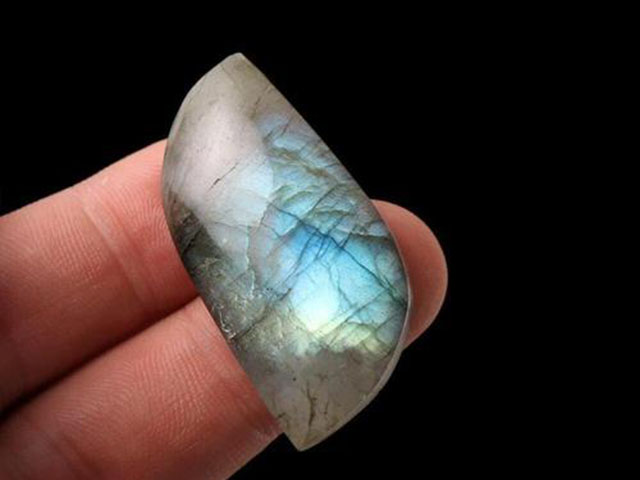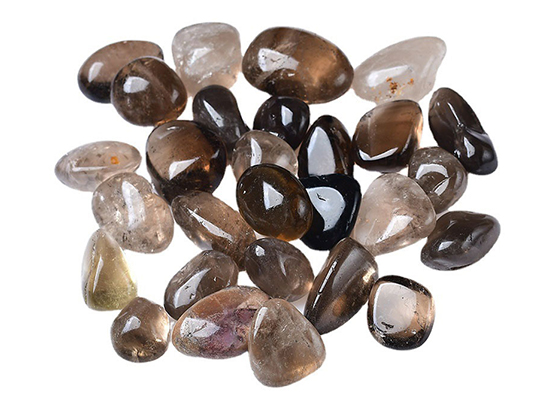Gemstones have been valued for their beauty and perceived healing properties for centuries. Two popular gemstones that have been gaining attention in recent years are Moonstone and Labradorite. Both of these stones are known for their iridescent qualities and mystical properties, but which one is better? In this post, wholesalejewelryusa.com will teach you the properties of Moonstone and Labradorite, highlight the differences between them, and help you decide which gemstone is best for your needs.
Properties of Moonstone
Moonstone is a type of feldspar mineral that is known for its milky white, pearly sheen. This gemstone can range in color from white to peach, gray, and even blue. Moonstone is often associated with the moon and is believed to have mystical and metaphysical properties.
Physical Characteristics
Moonstone is a relatively soft stone, with a Mohs hardness rating of 6 to 6.5. It is composed of aluminum potassium silicate and has a specific gravity of 2.59 to 2.61. Moonstone can be found in Sri Lanka, India, Madagascar, and other parts of the world.
Metaphysical Properties
Moonstone is believed to have a calming and soothing effect on the mind and emotions. It is said to enhance intuition and spiritual awareness, and can help with fertility and hormonal balance. Moonstone is also believed to be a stone of protection for travelers and a talisman for new beginnings.
Healing Properties
Moonstone is said to help with a variety of physical ailments, including menstrual cramps, digestive issues, and skin problems. It is also believed to be helpful for emotional issues such as anxiety, stress, and depression.
Types of Moonstone
There are several types of Moonstone, including:
- Blue Moonstone: This variety of Moonstone has a blue sheen and is considered to be one of the most valuable types of Moonstone.
- Rainbow Moonstone: This type of Moonstone has a milky white base with flashes of blue and rainbow colors.
- Black Moonstone: This variety of Moonstone has a black base with a silver or gray sheen.
Properties of Labradorite
Labradorite is a feldspar mineral that is known for its iridescent qualities. This gemstone can range in color from gray to black, with flashes of blue, green, and gold. Labradorite is often associated with the Northern Lights and is believed to have powerful metaphysical properties.
Physical Characteristics
Labradorite is a relatively hard stone, with a Mohs hardness rating of 6 to 6.5. It is composed of calcium sodium aluminum silicate and has a specific gravity of 2.68 to 2.72. Labradorite can be found in Canada, Finland, Madagascar, and other parts of the world.
Metaphysical Properties
Labradorite is believed to have a protective and grounding effect on the body and mind. It is said to enhance intuition and psychic abilities, and can help with spiritual transformation and self-discovery. Labradorite is also believed to be a stone of perseverance and strength.
Healing Properties
Labradorite is said to help with a variety of physical ailments, including respiratory problems, digestive issues, and menstrual cramps. It is also believed to be helpful for emotional issues such as anxiety, stress, and self-doubt.
Types of Labradorite
There are several types of Labradorite, including:
- Spectrolite: This variety of Labradorite has a high degree of iridescence and is considered to be the most valuable type of Labradorite.
- Blue Labradorite: This type of Labradorite has a blue sheen and is often used in jewelry.
- Golden Labradorite: This variety of Labradorite has a golden sheen and is believed to have powerful metaphysical properties.
Differences Between Moonstone and Labradorite
While both Moonstone and Labradorite share some similarities in terms of their metaphysical properties and physical characteristics, there are some key differences between the two gemstones.
Color
One of the most noticeable differences between Moonstone and Labradorite is their color. Moonstone is typically white or peach with a pearly sheen, while Labradorite is typically gray or black with flashes of blue, green, and gold.
Transparency
Moonstone is often translucent, allowing light to pass through the stone and highlighting its iridescent qualities. Labradorite, on the other hand, is often opaque or semi-opaque, with its iridescence visible only when the stone is moved or viewed from certain angles.
Sheen
Both Moonstone and Labradorite have a sheen or glow, but the way in which this sheen is displayed is different. Moonstone has a soft, pearly glow that seems to emanate from within the stone, while Labradorite has a more dramatic, almost metallic sheen that appears in flashes of color.
Hardness
Labradorite is slightly harder than Moonstone, with a Mohs hardness rating of 6 to 6.5 compared to Moonstone’s rating of 6 to 6.5. While both stones are relatively soft, Labradorite is slightly more durable and less prone to scratches and damage.
Availability
Moonstone is more widely available than Labradorite, and can be found in a variety of colors and sizes. Labradorite, on the other hand, is rarer and can be more difficult to find in larger sizes or in certain colors.
Cost
The cost of Moonstone and Labradorite can vary depending on factors such as color, size, and quality. In general, however, Labradorite is often more expensive than Moonstone due to its rarity and unique iridescent qualities.
How to Choose Between Moonstone and Labradorite
When choosing between wholesale Moonstone jewelry and Labradorite, there are a few factors to consider.
Consider Your Purpose
Both Moonstone and Labradorite have metaphysical properties that can be helpful for a variety of purposes, but they are said to have slightly different effects. Consider what you are hoping to achieve by using the gemstone and choose the stone that aligns best with your goals.
Consider Your Personal Preferences
Do you prefer the soft, pearly glow of Moonstone, or the dramatic flashes of color in Labradorite? Consider which gemstone resonates most with you on a personal level.
Consider Your Budget
While both Moonstone and Labradorite can be relatively affordable, Labradorite is often more expensive due to its rarity and unique properties. Consider your budget when choosing between the two stones.
Conclusion
Both Moonstone and Labradorite are beautiful gemstones with unique properties and qualities. While Moonstone is known for its soft, pearly glow and calming properties, Labradorite is prized for its iridescent flashes of color and protective qualities. Ultimately, the choice between the two gemstones comes down to personal preference and the purpose for which you plan to use the stone.



